Do Binaural Beats Really Entrain the Brain? Dr. Elizabeth Krasnoff Talks with iAwake
Dr. Elizabeth Krasnoff, Ph.D. talks with iAwake about the neurophysiology of brainwave entrainment, what binaural beats actually do, the role of protocol, pink noise, healing with sound, and much more in this fascinating, comprehensive, behind-the-scenes-of-sound-technology interview. Dr. Krasnoff wrote her 2021 dissertation on “The Effects of Auditory Binaural Beats on Consciousness and the Human Nervous System” based on the most current scientific research, and is here to share her passion about sound – how it works and how it can heal. What does the latest research show? Do the effects of binaural beats live up to the marketing claims made about them? Can they be transformative? Find out here.
Do Binaural Beats Really Entrain the Brain?
- What led Elizabeth to studying binaural beats in the beginning? 1:55
- It’s not entrainment. It’s a frequency following response. 7:48
- Can sound heal nerve damage? 11:18
- Binaural beats, rhythms, and the autonomic nervous system 12:22
- Sound location — where binaural beats are processed in the brain — is a primary survival skill. 16:18
- What about carrier frequencies? 21:18
- What are some of the studies doing wrong? 25:41
- Binaural beats and the reticular activating system 31:39
- The role of protocol with binaural beats 33:59
- Modeling binaural beats after the target wave shape 45:30
- How resonance creates additional energy for the brain 47:43
- Binaural beats synchronize your brain hemispheres. 55:03
- Mixing frequencies works best. 57:35
Elizabeth Krasnoff Talks with iAwake
Full transcript, reading time approximately 35 minutes.
Listen to iAwake’s High Focus audio track from our Stealing Flow+ suite to help you concentrate and process the information while you read this transcript. The transcript will take around 35 minutes to read, so this 25-minute track has been set to loop. Please wear good quality headphones or earbuds for the best experience.
John: Welcome, everyone. How are you? Here we are, and let me introduce us. My name is John Dupuy. You may or may not know me, but I’m the CEO of iAwake Technologies. And I don’t know all of what Heidi does at iAwake — she’s my assistant, but she does a lot more than that, and she’s here for this interview because she should be. And this is Douglas Prater. He is one of our very important people at iAwake; he creates the technology. He’s a wonderful artist, a wonderful soul, and has a great scientific mind that understands the inner workings of this science and technology and what we do. And this is Dr. Elizabeth Krasnoff. She did her Ph.D. opus magnum on brain entrainment technology, so we’re here to pick her brain and see what she’s learned and what she can share about what she learned on this journey to become a… Doctor of Psychology, I suppose, right, you’re a psychologist now?
Elizabeth: Actually, I’m a Doctor of Transformation.
John: Oh, how cool is that?
Elizabeth: I’m in the School of Transformation and Consciousness.
John: …At CIIS (California Institute of Integral Studies). It’s a wonderful school. It’s produced all kinds of brilliant people and had great teachers there over the decades. I’ve been connected with it. So congratulations on that.
Elizabeth: Thank you, John. Great journey.
John: So, Heidi, you brought a couple or three questions. You want to lead off?
Heidi: Well, I’ll lead off with the first one. I just wondered what drew you towards studying brainwave entrainment in the beginning?
Elizabeth: I am half deaf. I have tinnitus, I have misophonia, and as a child, I had profound social isolation. I didn’t know I was deaf until I was 19 because it’s a half deafness. When I was 19 and I went to, finally, the emergency room because the tinnitus was so loud, I couldn’t sleep, they said, well, it’s because you’re deaf. And I said, that’s very funny. Really, what’s happening? I was deaf! And so I got my first pair of hearing aids.
John: Brilliant. So if we’re in an elevator in New York, and we have like 80 floors to go, how would you summarize what you found in your dissertation? And then we can build on whatever you say after that.
Elizabeth: Sure thing. I’m pretty detailed, so, I’m going to time myself here, just two minutes, right? Okay. I like to get into the details!
John: Let’s take three, Elizabeth.
Elizabeth: Okay. The research: I like evidence-based healing. I’m an intuitive, I’ve trained as an intuitive, I know the power of that, and I also know the power that comes from knowing the data. They inform each other. The intuition can tell us what to look for or how to use things that we found with data, and the data can tell us, did it work and what should we further explore? So, what did I find? Well, I wanted to look into all the marketing claims. I have a practice; my practice is called Sound Medicine. It’s seven years old. I use intuition, I use sound, especially binaural beats, but lots of modalities. I use shamanic tools, and I use biofeedback in the form of HeartMath. I’m certified in all of those modalities. And each of them brought to my understanding an awareness that the nervous system is a rhythm.
Elizabeth: So I wanted to ask, well, if we can’t, in mainstream science, trace these energy pathways yet, what can we know? We can study the nervous system. And I said, I want to bring some science, some solid science and evidence to the sound healing field about a sound technology. And I chose binaural beats. I structured my review on twenty-six studies. These studies had to be in reputable, peer-reviewed journals, and they had to be in the last six years, and they had to have at least reported 12 of the 18 data points that I compared. My questions focused on: Can we measure the effect on our neural brain waves, of the five brain states that we’ve all come to measure? Gamma, next is beta, alpha, theta, and delta. Can we measure that and see binaural beats having an effect on those neural rhythms, and can we measure the autonomic nervous system and see if binaural beats is having an effect on the autonomic nervous system? And it turned out we absolutely can measure those things.
It’s not entrainment. It’s a frequency following response.
Elizabeth: Okay, so let me just go over here for a second. About halfway through my research, I really started to understand that all of these study authors and the primary researchers in the field, who are Dr. Gerald Oster, a physicist who published in Scientific American in 1973 and started the contemporary exploration of binaural beats, and F. Holmes Atwater, the former director of the Monroe Institute, of the research there — so both the primary field researchers and all my 26 studies said, this is not entrainment. We just all use that word, and a mechanism is happening, but it’s not entrainment.
Elizabeth: So, by the way, rhythm and sound clearly entrain the brain. There are important clinical studies that establish that and there are many therapeutic approaches, including neurologic music therapy, very well respected, evidence-based music therapy technologies, that use rhythm. That’s not a question. Rhythm entrains the brain. In my world, we call that monaural beats. Monaural beats is when the envelope of sound is complete before it hits your ears, okay? That clearly entrains the brain. But with binaural beats, something different is happening here. I came across this and I said, well, there goes my dissertation! It’s not entrainment; I don’t have anything else to say here. And then I realized, wait a minute, no, this is really important, because what is it?
Elizabeth: So those two researchers that I spoke about and the twenty-six studies all said, okay, what we’re seeing is a frequency following response. We are all recording very clearly a frequency following response. It’s just not enough energy that would indicate entrainment. It’s something else. So I looked at the other hypotheses, and the one that I align with was really put forward by Atwater. If you go deep into the science, the correlation is so complete, I think that’s the direction for the research to take. The hypothesis is that that binaural beat is coming into your reticular activating system, which is a neural network in the brainstem and a non-primary hearing pathway. Something else is happening there.
John: Does that mean people with hearing problems can use this technology? And effectively?
Elizabeth: What hearing problems?
John: Yeah, that’s a question. I don’t know. I’ve had that question given to me a lot, and anecdotally what people say is, yeah, it seems to work. So, I was just throwing it out to you from what you originally said about your deafness and this technology, whether you were being affected by it. And I didn’t mean to interrupt you because you were in such a great vain, it’s wonderful.
Can sound heal nerve damage?
Elizabeth: Not at all. We’ll get to it all. Hearing loss like I have is nerve damage. One of the six studies that didn’t work was trying to use binaural beats to heal tinnitus. So what do I know about that? I know some personal experience and then some research. I think the most effective treatment for tinnitus I know is happening right here at UCSF, (I’m in San Francisco). They will match the frequencies and hit you back with those frequencies, those very high frequencies that match your tinnitus pitch. I have read very good things about that healing technology. But I’m a little curious about this, because I just came off of a sound, brain, and vibration conference where I presented — it was actually on binaural beats. The question there is, can sound heal nerve damage?
Binaural beats, rhythms, and the autonomic nervous system
Elizabeth: The way I use sound and most of the evidence I find is that sound, particularly binaural beats, can work to heal rhythms that the nervous system is responsible for. Rhythms. So what’s an example of that? Your cardiovascular system is a rhythm. Your endocrine, your hormonal system is a rhythm. Really anything that the autonomic nervous system or the hypothalamus or the nervous system controls is a rhythm. We have a circadian rhythm, we have ultradian rhythms, that’s rhythms that happen in under a 24-hour time period. All of those things that the autonomic nervous system and the hypothalamus address are things you can address with binaural beats. We’ve kind of defined that. So back to one of those threads, can we say that the marketing claims are true? Well, these studies showed that conclusively (I don’t have the slide in front of me) that sleep is positively affected by binaural beats. Stress is positively affected by binaural beats. And by the way, the Stress Institute of America said something like 90 percent of our illness comes from our stressors — our response to our stressors in our life.
John: Including addiction, which I don’t think they were talking about, you know.
Elizabeth: That was not mentioned. So my HeartMath background really dialed me in on what stress is, what it does, and how to work with it. In my business, I help clients reduce their stressors and find healthy rhythms. So let’s see, back to our list. Stress, the perception of pain. Binaural beats have been demonstrated to be an analgesic. Less pain medication is required. Dentists will test that. There are three fields that there are binaural research in right now: neuroscience, psychology (particularly cognitive psychology, of course), and health. So all of the quantitative measurements are kind of coming from neuroscience, all the qualitative, semi-quantitative kind of come from the field of psychology, but really all three fields are looking in all those directions to see what are the effects. So we’ve named sleep, we’ve named stress, we’ve named pain, meditation, and trance. That’s documented. Meditation and trance. Cognitive tasks, like memory and focus, that’s documented. And all of these things are rhythmic in their nature. Doesn’t seem like it. But if we took a deep dive with that, it would shortly make sense.
Elizabeth: So those are the things that at this moment in time have been clinically documented to be positively affected by binaural beats. So we can go two places — we can go, why are there six studies that did not show any effect? And we could also briefly look at nerve damage. At that conference I was just in, a lot of folks are on the frontier of many different healing areas, and nerve damage is one of them. Using sound, using ultrasound, using specific frequencies. But I want to make the distinction that those are all monaural sounds. The sound envelope is complete before it hits the brain.
Sound location — where binaural beats are processed in the brain — is a primary survival skill.
Elizabeth: We are in another realm, we are in binaural beats, not entrainment, the sound envelope is not complete. It’s finished inside our brain. I want to talk about Oster for one second here. He had three key insights. Let’s see if I can remember them all. One of them was that we have in our brain an auditory pathway for sound location that is the same place that binaural beats are processed. So what he said to us was that this is a function of our brain and a primary survival skill. In the fetus, the first thing you get is your hearing. When you are out and about and trying to stay alive on this planet, your ability to survive depends on your ability to decode all of these millions of invisible vibrations that are coming at you. That’s what this is. It’s a decoder. And you are creating your reality in every second. (David Eagleman on the brain, if you want a deep dive into that. He’s brilliant.)
Elizabeth: So with sound, that binaural hearing that is a function of our brain only exists momentarily in nature, because you don’t have these extended moments of that phasing, okay? When we create binaural beats, we’re creating them synthetically. We are activating that system. So that should be enough evidence right there for anyone. But it’s not. I digress. So what happens is, we create that extended binaural beat. We are opening new portals of expansion, of healing, of possibility in the brain that as humans we never had available to us before, accomplishing things that take decades for meditators to accomplish. And we are using a system that naturally exists.
Heidi: You’re saying nature has these little tiny healing moments, but it’s with sound?
Elizabeth: They’re not healing moments. They are locating moments.
John: And hence survival potential.
Elizabeth: In the brain, the thing that’s activated right after sound in the auditory cortex is the motor cortex. I hear and I turn my head. Do I need to run? That’s how the process goes. Sound location is critical to our survival and that is the place that we are working with when we are using binaural beats. That was Oster’s first discovery to us. And I think that’s critical. He also noticed that it does not deteriorate with age. Very interesting. You don’t actually need to perceive binaural beats to receive binaural beats. There are two studies that document that. The way they did it is they would have the high frequency in the auditory range and the low frequency out of the auditory range, and the effect would still happen. I see, yes, the artist…
Doug: I’m thinking through so many different possibilities here. So was the frequency that was subsonic less than 20 Hz or so?
Elizabeth: It has to have been, because that’s the bottom shelf of our hearing range. But for the specific data on that, it’s in the Oster article, the 1973 article. I’m also making my dissertation available open source.
Doug: Wonderful. More people should do that.
Elizabeth: Yes! And I have all my references. So what I’m going to give you today is what I have reviewed as a researcher. Anything I say that you want more information about, I can point you to a study or a researcher. If you stop me and ask for a name, I can do that. That’s really important to me. I do like to also make intuitive leaps and understandings, but I like to frame that, and say this is a guess versus this is what the data has shown. I think it’s important.
What about carrier frequencies?
Doug: One of the questions that I had for you relates to what we were just talking about with being out of the audible range. I also saw in your research that one of the factors that was not standardized throughout the studies was the carrier frequency. And I wondered if you had any recommendations for that, if you were able to confirm or refute the hypothesis that lower carrier frequencies are more powerful for, I guess not entrainment, but the frequency following effects of binaural beats. And if you had any recommendations for where that standard may be.
Elizabeth: Yes. I wish I had more concrete data for you. So 18 data points, carrier frequency obviously a huge data point. And we’re at the beginning of knowledge on that data point. I can think of maybe three references where I saw a study where authors say, we selected this carrier frequency because it creates this effect. Everybody else is pretty much blind to carrier frequency at this point. But there are a few authors that I can point you to that have begun that research and use specific frequency for specific reasons. I was listening very carefully at the last sound conference because one of the issues that the sound healing field faces is a lack of validation about the sound frequencies that people use. Where did that information come from? Have you seriously trialed these frequencies?
Elizabeth: There are a couple people out there working with some very specific frequencies right now. No, this is not binaural beats. This is just frequency therapy. And a lot of people are using 40 Hz for inflammation and some other benefits. And they know what frequency is good for healing nerves and what frequency is good for these various stress or stomach issues. And they mix them. So what I find interesting there is, are those are carrier frequencies? What if you’re targeting nerve damage and you use a carrier frequency that is known to heal nerve damage and add the binaural beat to it? Wow. I can provide you with that list of frequencies. Absolutely. This is all the Globe Institute, the sound healing center here in San Francisco. They’re doing a fantastic job of unifying the field and the research. I also think that… So tuning forks is a very well-established field and they are dialed into a very specific set of frequencies as well. I hope that a researcher goes in there and says, okay, you believe these frequencies do these things. Let’s go into the lab. Let’s see exactly.
Doug: I would love to see that. There definitely seems to be a lot of commonly accepted or repeated wisdom that people talk about, the Solfeggio frequencies, for example. And I would love to see studies’ validation or not.
Elizabeth: Yes. So if anyone’s listening, I always say, at this moment, you have to trust the way you feel and the way you respond, because there is no data to support this at the moment, which doesn’t mean there won’t be. So that’s as far as I’ve gotten with the carrier frequencies. Duration became a huge thing: a minimum of eight to 10 minutes. And there are a lot of very specific studies — these are EEG studies, they’re not subjective. It’s not like, “oh, I feel better now.” They’re EEG studies. And the very good studies will correlate EEG studies with subjective tests like a BRUMS mood test, or even just a subjective diary. And when you do that, you can — I’m thinking of three studies specifically — see people reporting what you are marking on the EEG, which is a really good confirmation. So duration was very important. Carrier frequency we’re beginning to learn about.
What are some of the studies doing wrong?
Elizabeth: I want to talk about intra individual differences and now Oster’s third point as well. So, remember how we said binaural beats affects the nervous system, which is a rhythm? He noticed that binaural beats affect or can be a tool for measuring the endocrine system. Because women, at different times of the month, based on their hormonal cycle, responded differently to the same binaural beat. Pretty fascinating. But it makes sense if you think about it in terms of a rhythm. So, what I want to say here is when you’re constructing a study…there’s one study that he couldn’t get results and they had twenty 50-year-old women at the same carrier frequency.
Elizabeth: What if the carrier frequency they chose and the binaural beat that they selected doesn’t have an effect on menopausal women? At age 50, your endocrine system is in a different place as a woman, so a lot of the studies, they would be too limited. They wouldn’t have the correct…this is of the ones that didn’t work. They wouldn’t have enough people in the study and they would have too many people in the same category. On studies where you’re dividing and your hiring half male and half female and you’re having a wide age range, you’re getting a better read. That’s one of the factors: age and gender. And there’s a third inter individual difference that we know about, and I’m pointing to a specific study, Redick is the author, and what she measured was our eyeblink rates. Measuring eyeblink rates tells you about your dopamine levels, and measuring the dopamine levels tells you whether someone has the introverted personality or an extroverted personality. Pretty fascinating. So what she learned was that if you were an introverted personality, you were more affected by binaural beats. So when you have…like in some of these studies, there’s nine subjects, and they say, “oh, we didn’t get any results.” Did you have nine introverted people? Some of these studies, they only used three minutes of binaural beats. A big one that got a lot of press.
John: That’s right. I remember that.
Elizabeth: Three minutes! And do you know what else that study concluded? Okay, I’ll tell you two really fun facts. That study also concluded that monaural beats (we know what monaural beats are — that’s regular sound) and binaural beats have no measurable effect on our moods. None. I’m like, wait a minute, you just said that sound has no effect on human moods. I don’t know if anybody would agree with that!
John: Ever hear of the Beatles?
Elizabeth: Exactly! But see, the thing is, I don’t look at these studies as good guys or bad guys. These are people honestly searching for answers. They’re asking honest questions. They’re constructing the studies to the best of their abilities and they’re looking to define the parameters. And they did define parameters. That particular study is also one of my top studies for documenting cross-frequency communication. That’s hemispheric synchronization, which is one of the other marketing claims. Can it synchronize our brain hemispheres? That study defined it very clearly.
Elizabeth: So, you know we as a society fall into a pattern of thinking that we understand something by a brief read or making a conclusion. There was some of that going on, some of inter individual differences not being taken into account, not enough duration, choosing the wrong binaural beat for the wrong task. One study used theta binaural beats to create a cognitive focus. That’s not what it’s for, right? For a cognitive focus, you would use gamma or gamma/beta. Let’s talk about that for a second. The things that we can really understand and our developer can tell us, probably, if he has used these ones, the things that we can really see happening are gamma and beta pulling us into focus.
Elizabeth: Right? That’s what I use when I’m reading my neuroscience studies and losing my mind, trying to understand. I’ll use the gamma, the gamma/beta. I have used in my practice theta for my 13-year-old kids that are ADD. One child learned his football plays that way. So, anything focusing or high gear is up there, and then you’re literally coming down the gearbox. We’ve all driven a car — then you come down to the middle ones and now you’re starting to do meditative: alpha, theta, and then sleep — delta. I love alpha/theta. I love theta. AndI haven’t found the delta that works for me yet. I like a low voice, a human voice. I will listen to like Headspace, Andy, reading or something. A male voice is very soothing for me personally. I love those low timbres.
Binaural beats and the reticular activating system
Elizabeth: So, to go over to the reticular activating system…We know that binaural beats come in the auditory canals, two separate frequencies, and we know that they meet, because they put electrodes on the brains of cats and other little animals. We know that the olivary nuclei is where they are begun to be processed, and we know that they end up at the auditory cortex. This is where we hear, the auditory cortex, not in our ear.
Elizabeth: What happens in the middle? The hypothesis is that it’s the RAS system. The RAS, I observe, has three states, and in the field of neuroscience, that’s considered the gateway for consciousness. This is where consciousness comes in — you can’t study sound without studying consciousness. It has awake, meditative/light/sleep/dozy, and then it has deep sleep. Those are our three states of consciousness that the RAS system regulates. And it’s considered the gateway to consciousness in that field. That’s the known science, the actual definition. Because the RAS creates our awakening to our environment. It processes external processes, all five senses, not just sound. This is known science, and it processes our internal perceptions as well. So all of our internal and external perceptions go in there. And it regulates our growing awareness of our environment, internal and external. Do we awake to it or do we retreat from it? Isn’t that basically the five brain states that we’re studying? From the high gear to the low gear? So I’m saying the evidence is so compelling, that’s got to be the next thing that a researcher cracks and that’s how you with your beats are impacting states of consciousness.
The role of protocol with binaural beats
Elizabeth: What else? One other huge factor that I learned from this study — you’re going to love this one, and this may be something that you already do as a company or something that you can begin to develop — is protocol. What happens before you use the binaural beats? So I said binaural beats are something else? A hypothesis that I formed which has been rejected in the field — I want to be clear, and some people still like it, some people don’t — is a form of resonance called stochastic resonance, in which an existing signal is being boosted. It’s a signal boost. Binaural hearing itself is described that way; it’s called the cocktail party effect. Oster talked about that in his article, where you can have all that noise and somehow it doesn’t drown out the sound location, it enhances it. And all the study authors and their conclusion when they’re describing what happens, that’s what they’re describing. Background noise doesn’t drown out binaural beats, it enhances it. You need to hear them. Oster measured a binaural beat to be approximately three dB’s, like a whisper. You don’t need to hear that whisper for it to affect you. The most affect they have found is with pink noise. So you could throw some pink noise in your recording. You probably don’t have to hear that either.
John: Well, you know, in our stuff you don’t hear the bada bada bada or whatever it is, it’s got all this other beautiful stuff that’s layered over it. And there it is. This is great. We’ve known all this stuff for a long time, but this is terrific. Thank you.
Elizabeth: I kind of like electronica; I like the binaural beats with like a chill electronica track, or it could be with beautiful guitar music, or it could be nature sounds. That’s my preference. But in the studies, it shows that pink noise causes the highest effect — not that the others don’t. Very clear. Many people had effect with all the others. Some used it as a pure tone — I wouldn’t find that very pleasant to listen to for any amount of time. But then again, you have to remember who’s creating these tests, neuroscientists.
John: That’s a good point.
Elizabeth: Health professionals, cognitive psychologists. They’re not in the field of sound.
Doug: One of the programs that I’ve done for iAwake — most of them, anyway — I include a low volume bed of pink noise, which I then frequency lift as well. I’ve found N=1 with this, but found that it enhances the effects for me.
Elizabeth: Okay, fabulous validation right there. And that is backed by the clinical data.
Doug: Wonderful to hear.
Elizabeth: For sure. The protocol: So, if this is a signal booster or signal enhancer, what is it enhancing? It means it’s enhancing a preexisting something. Here’s a study that I found that is not binaural beats. In a mouse, they found when the mouse experienced fear, all of a sudden a brain wave that connected the frontal cortex and the amygdala at 4 Hz. How cool is that? But we’re starting to understand that the brain is communicating in these brain waves, in these neural, electrical, rhythmic signals...4 Hz, 4 Hz, 4 Hz, 4 Hz. That’s fear in a mouse. Let’s just put that over there for a second. So back to the binaural beats, what are those beats coming in and amplifying? I have one study where they actually created anxiety and fear with a 6 Hz binaural beat. What!? So we have a lot of variables here. You need a very sophisticated analysis and diagnostic to understand all the moving pieces. It’s like we’re starting to see pieces here and there. One study uses artificial intelligence, multi-layer perceptron, it’s called, to analyze their EEG data. It’s a false, an artificial nervous system, a computer-generated nervous system, that is smart enough to interpret multiple layers of moving data. Because in a good scientific experiment, you have to reduce the data. You only have to have a few variables so that you can see what’s affecting what.
Elizabeth: What happens when you have 18 variables? You end up with one study where you are provoking fear and one study where you are creating peace. I have one study I thought really addressed this, and it’s a study of 109 participants, so it’s robust. The author is Sabo, Hungarian, and they were testing for trance and meditation. They found that they were able to induce a trance-like state in their 109 subjects, but only if they had a protocol of relaxation given to them before the track. So if you have people that are using your binaural beats, they may naturally be doing this. “Okay, this is my time, I’m going to sit down, I’m going to listen to my beats…” They may set an intention unconsciously. “I’m going to relax now.”
Elizabeth: Well all those things, what if those are the signals that you are amplifying? Right? Like you create your own set of brain waves. And so there’s another thing to substantiate this, in addition to this one clinical study, and that is Atwater himself at the Monroe Institute. So the Monroe Institute, which you all know what it is, was so successful using binaural beats synergistically in their program to create profound states of meditation and astral projection and expansion of consciousness and healing in that way — and they always had a protocol. It could be verbalizing to yourself, it could be deep breathing, it could be emotional, like HeartMath, imagining beautiful places…You could even have that on your track. “We’re going to take two minutes now and prepare for this track. Imagine your favorite place in the world. Call your favorite emotion into your heart. Is it love? Is it gratitude? Is it awe?” Something like that would be appropriate for a meditation track. For a focus track, I would do something different.
Elizabeth: So one of the issues we have in the field is that nothing is standardized. That’s one of my big recommendations. I do not have for you data that says this study used this, and this study used this, and this study used this. Most of them don’t even report whether they used it or not. But I do have that one study that was conclusive with 109 subjects and Atwater and the Monroe Institute that have been doing this for 50 years. For me, that’s pretty clear that the protocol is really important and a big factor. Some of these studies, you put someone in a lab chair, they’re just sitting there. It’s like, “Listen to this.” “Okay!” What are you accomplishing? And yet they’re still getting some data, but my point is, have you even reached any of the effect potential of this? You’ve been able to prove that it exists under these sterile clinical conditions, but have you actually reached the effect potential?
John: You know, it might explain why a lot of us who use this technology were meditators before we started using the technology, and this just took us into the deep side of the pool very quickly. And I’ve noticed over the years that experienced meditators get it right away. They go, wow, this is actually doing something.
Elizabeth: Oh, that makes so much sense.
Doug: I’ve been working on a lucid dreaming program for quite some time now that uses binaural beats and some other technologies, and part of the reason it’s taken me so long is getting the teaching material and the protocol down, because that’s a critical component of this. The technology by itself is lovely, but it’s what you do beforehand and how you use it that makes all the difference in the success.
Elizabeth: So, you are finding that in your subjective experience, in your case studies, if you will.
Doug: Right — that having the proper technique and knowing what to do makes all the difference in whether or not you get the effects that I’m intending from it.
John: Yes, and most people seem to report that when they start using the technology, their sleep and dream life become very active and much more vibrant, much more powerful. Do you have anything that would explain why that is so?
Elizabeth: I would point you to that study and you would need somebody that could understand…So each sleep cycle he calls them, one, two, and three, they have specific designations, and he’s able to study how binaural beats lengthens or shortens your different sleep stages. So if there’s a dream sleep stage that binaural beats are enhancing and lengthening, that would be your answer. But I don’t have enough knowledge to conclusively answer that, just to sort of point in that direction and say, there is a clinical study showing which sleep stages the binaural beats affect. And that study was a conclusively positive effect for the participants. They used EEG for the brain activity, for the eye activity, for muscle activity, and they used a BRUMS, a mood questionnaire. So that was the diagnostics there. It was a pretty conclusive study.
Modeling binaural beats after the target wave shape
Doug: A question that I wanted to ask, and this goes in a slightly different direction here, but you were talking earlier about rhythm and the importance of rhythm and what a big difference that makes. I wondered, well, something you said in your presentation really perked my ears up, as it were, which is, you said brain waves and the patterns of brain waves, the shape of an alpha wave on the EEG or a theta wave or a delta wave, those are not sine waves. And what would happen if we started creating tracks where the binaural beats were modeled after the shape of the waves that they’re targeting? So I’ve been using a wave table synthesizer where I can draw in the wave form, the pattern of the tone, and create some pretty interesting sounds based on what I’ve drawn there. And if I were to target a particular brainwave state, take an EEG reading of what it is that I’m targeting and use that to create the sound, would that have any effect on its ability to help the brain reach those targeted states?
Elizabeth: That’s pretty deep. You’re in there deep! One of the presentations I just listened to was somebody exploring a similar idea to yours. They were drawing the different shapes of their waves and accomplishing different things with them, though I don’t think it was binaural beats. I think it was just frequency healing. So the thing that comes to me to add to that inquiry is that resonant frequency is measurable, and if you are targeting a resonant frequency and sending energy to that resonant frequency, you would create an amplification of available energy. Could we use that energy for healing? That would be either your studies of your participants or in the lab, we would have to find out.
How resonance creates additional energy for the brain
Elizabeth: Let me explain what I was saying there. With entrainment, a stronger wave entrains a less strong wave. The amplification can only raise as far as the stronger wave, but there is an energy increase there. So here’s how I learned to think about this. My definitions all came from the physics world and I put them together with the definitions in the sound world. Your body, in order to survive, must be as efficient with its energy usage as possible. I read a lot of Michael Thaut, an amazing pioneer in the music therapy world and neurologic music therapy world, a big name — definitely Google him. What he helped me to understand is that the brain has a rhythm and a tempo. When you’re sending music to the brain, you’re sending music in the language that the brain speaks. That’s the architecture of the brain. So beautiful, his work.
Elizabeth: And then, to get back to the other point, so when you’re entraining — or resonating — you are creating available energy. Now the body wants to be efficient with its energy, so you’re talking to the brain in its language and you’re saying, “energy available here, energy available here.” So everybody will say, “Oh, I want a consistent frequency. Consistent frequency is healthy. The brain needs to be in a consistent frequency.” That’s actually not true in the work of thought. I read that. Your brain is chaos (laughs), and so consistency can be good at times, but at times it’s too much. That’s how they diagnose autism or some of those other disorders, when it’s too consistent. We can’t be too consistent in some cases. So, here are all these energy patterns and waves going around. And I think the point that I’m trying to make is you have to have the right amount of energy available at the right time for the right thing for the brain to operate efficiently and be happy. If you’re using entrainment, you’re going to get a little bump of energy.
Elizabeth: Why would the brain use that? Why would the brain want a little bump of energy? What would that be good for? For using resonance, okay? Resonance is a different mechanism. Resonance is kind of unlimited energy coming in, and you can break that threshold. That’s the opera singer singing into the glass: the opera singer found the resonant frequency of the glass, pumped so much energy into that equation that that system said, okay, we have to explode now. That’s why the glass breaks. I had an atomic physicist on my committee. I had to. You can’t talk about sound without a physicist. He helped me to understand this.
Elizabeth: So, what does the brain need? What will make the brain efficient in that sort of situation? If you’re creating a resonant frequency…those are measurable, by the way. Those things are measurable. That will be a huge expansion in vibrational medicine when doctors and hospitals working together with physicists will start to be able to measure the resonant frequency. They do it for ultrasound, for kidney stones. That’s an ultrasound coming in, blowing up the tumor by expanding the energy passed what the tumor can handle. So, you’re kind of talking about a resonance effect creating that energy there. And what I really want to know is, how can we say for sure that energy is becoming available for healing? How can we say for sure that the brain is going to say, that’s efficient for me, I’m going to use it?
Elizabeth: We know that consistent energy is efficient energy. That’s why we have coupled oscillation, that’s why nerve cells come together. That’s why your heart beats like that all together. That’s efficient. That’s why pendulums, if they get close enough, will come together. Pendulums is how we started studying this, and it creates that energy efficiency. So those are sort of the parameters that we’re dealing with here. So sound therapy says, well, consistent energy is efficient and in many cases it is. Sound energy says, okay, let’s use inconsistent, jagged tones to break up energy, to break up stuck energy. In Michael Thaut’s book it shows when you need to learn something new and surprise the brain, that’s the mechanism. The brain will keep doing what it does because it’s efficient until you surprise it. So it would use that to create a new pattern, a new program, a new learning. So those are some of the ways that these sounds and energy mechanisms work, and so I give that to you because you’re kind of in there working with how much energy do I create? That’s what you’re doing, you’re creating. It’s really exciting. I want to listen.
John: Oh, you should.
Doug: So many interesting thoughts and ideas that come just from that.
John: Well, the good news is technically the elevator got stuck between the 12th and 13th floor. So, yeah, here we are. That was an easy interview! Pull the string. Very, very, very useful.
Heidi: Okay, just to go back to the very beginning, so if somebody says, oh, I hear that actually with brainwave entrainment, the entrainment word is wrong. It’s not entraining. Is it just…what is it doing again in the short version? Like if you listen to iAwake?
Elizabeth: Frequency following response.
Heidi: And then that boosts energy and creates a resonance?
Elizabeth: A stochastic resonance, yeah, it’s a signal boost. Energy becomes available…can we use it for healing? I think that’s what we’re doing.
Heidi: Right.
Binaural beats synchronize your brain hemispheres.
Elizabeth: There’s something else really important, binaural beats do something else. So it’s a frequency following response that boosts signals and synchronizes your brain hemispheres, which is so powerful. We’re on the frontier of that and we have some established modalities, not only neurologic music therapy but EMDR. We’re bilateral! Very powerful things happen when we synchronize our two sides.
Heidi: Yeah, that’s awesome.
John: Elizabeth, I’d like to invite you if possible — give us a bit to digest all of this, review my notes, and make a transcription, and I want to send, obviously, this interview to all our creators because there’s so much valuable stuff here, and make it available to the public. You’re just such a a good, clear speaker and immediately my graduate student kicked in and I started taking copious notes of everything you’re saying, because it was like all important and you just triggered some frequency in my brain to take notes.
Elizabeth: We were on the same frequency. (laughs)
John: This is so exciting and so encouraging, and yes, could we have you back some time if we could persuade you or something? I’d also like to get you into the world of the conferences that I go to, the Integral world. You know, there’s a conference I go to every year — well, before the pandemic — but we hope to get back there in Hungary. It brings a lot of the Integral takes to the world together. It’s a great experience. It would be very useful because we’ve been talking about this stuff for a long time, but you have just put it all together with the science and advanced the field significantly. Deep bow, and thank you for that.
Elizabeth: It was grueling, exciting, fun, long, (laughs) and so rewarding. Thank you. You know, after four years of sitting at your desk, it’s nice to come out and talk to people about it.
John: Oh, I bet. Well, welcome back. Thank you.
Mixing frequencies works best.
Doug: By mixed frequencies, do you mean layered binaural beats at different entrainment rates?
Elizabeth: Like putting theta and alpha together for your meditations and beta and gamma together for your focusing.
John: Epsilon would be an example of that too, Doug?
Doug: Well, it would be mixed with something. So, yeah, if you mix… Like in Stealing Flow, it’s primarily at the alpha/theta border, but also with gamma layered in on top of it for the combined effect.
Heidi: Or the deep releasing meditations that are theta, but then with bits of gamma to make things happen inside…
Elizabeth: Wait a minute, did you do that intuitively?
Doug: The theta and gamma? I read this wonderful book, Stealing Fire, and I read Csikszentmihalyi’s book about flow…
Elizabeth: I loved that book, too! (laughs)
Elizabeth: Very cool. In one of the presentations I just watched, theta was carrying…so here’s the theta sine wave carrying all these little gamma waves on it, like on a whale’s back, little barnacles across the brain. Cool, huh? Yeah, that’s a great example.
John: Doug, I just had an idea, maybe take some of your works and just send them to Elizabeth with the notes of what you actually did and how you did that. Might be really…
Doug: It’d be fascinating.
Elizabeth: Yeah. I don’t know, I just make them from my music. I’ve released eight albums, you know, I’m all about sound, every aspect of it, creating it, studying it, everything. And on my last one I put some binaural beats in, and I have a question for you. So I found that I like two beats together, and I find that I even like three together, but four was too much for me. Three was my limit. After that, I was like, that’s too much information.
Doug: Yeah.
Elizabeth: You have any of that conversation happening?
Doug: The only time I have liked four is in a re-creation of the Awakened Mind pattern.
Elizabeth: Oooh, yeah, the Mind Map?
Doug: With Anna Wise, yeah. Recreating that, getting four in there works well, but beyond that I haven’t experimented with it too much, more than doing two or so at a time.
Elizabeth: Keep me posted!
John: You know, as a musician myself, I play lead guitar, and when there is a bass and a drum in sync, you know, like Fleetwood Mac, through all its permutations and all the great music that band has created, they had a great bass player and a great drummer. You know, all the other characters changed, I think, for the most part. But when that bass thing is laid down, that gives the people on top an incredible creative space to play in, and I can just feel it waking me up. I don’t know what that is. You know, it’s music, it’s magic, but it would be interesting just to.. You know, why does that happen?
John: Wow. That’s right.
Elizabeth: But that’s what’s happening in here. We’re all ratios — all the planets, all the cells, everything is ratios. And you can describe that with music and mathematics.
John: So we didn’t invent math and music, we’re discovering it as we go.
Elizabeth: We discerned it.
John: Yeah, we discerned it. There you go. Awesome. Anyway, we’re very excited about this. I never know what to expect, so I don’t expect anything, but this is… I can’t say it exceeded my expectations because I didn’t have any, but I’m very, very happy and very impressed and very enlightened by this conversation. And we’d love to have you back once we digest this, have a few more questions, and maybe we can throw in some of our stuff, too, and just build the conversation.
Elizabeth: I look forward to it. As you can see, this is… It was my dissertation, and that’s big enough, but it’s also my life path. So yes, I’m always on it.
John: I feel that. Yes, okay, thank you so much. We appreciate you a lot.
Heidi: Yeah, that was wonderful.
John: Thank you, Doug, thank you, Heidi.
Elizabeth: Doug, thank you.
Doug: Thank you so much.
Elizabeth: Thank you Heidi.
Heidi: Thank you. Hope to see you again. All right, and good luck with your further endeavors.
John: Okay, bye bye.
Read Dr. Krasnoff’s published 2021 dissertation “The Effects of Auditory Binaural Beats on Consciousness and the Human Nervous System” here.
Focus with gamma, do your emotional work and visioning with theta, help your sleep patterns with delta…iAwake Technologies can help you access these brainwave states and more…epsilon and lambda for example!
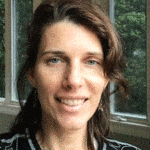
Elizabeth Krasnoff, Ph.D. MIM, is a certified Energy Healer and received her Sound Healing & Therapy Certificate from the Globe Institute in San Francisco. Elizabeth is also a certified Heartmath Practitioner and a Shamanic Practitioner in training. She presents on sound and consciousness at venues such as the Tucson Science of Consciousness Conference, Yale Divinity School, The Graduate Institute, CIIS, CIHS, the Academy of Intuition, and the Globe Sound Healing Conference. Find out more at her website, Sound~Medicine.com.

John Dupuy is the CEO of iAwake Technologies and travels internationally to teach and inspire on the subjects of Integral Recovery, Integral Transformative Practice, and the use of brainwave entrainment technology to deepen one’s meditation practice and in the treatment of addiction, depression, and PTSD.
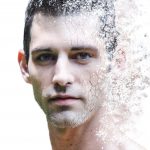
Douglas Prater is the creator of iAwake’s Stealing Flow+, Infinity, Rainstorm Sleepwave, and more! He is an author, meditator, fitness enthusiast, and musician who holds a degree in Music: Sound Recording Technology from Texas State University. Doug is committed to the art of deep practice in every area of life.

This blog was created by Heidi Mitchell, John Dupuy’s longtime assistant and iAwake’s blog manager. John introduced Heidi to Integral practice and sound tech-enhanced meditation in 2007. Heidi is also a freelance editor of nonfiction books, blogs, and websites. She can be reached at www.heidimitchelleditor.com.
Leave a Comment
You must be logged in to post a comment.


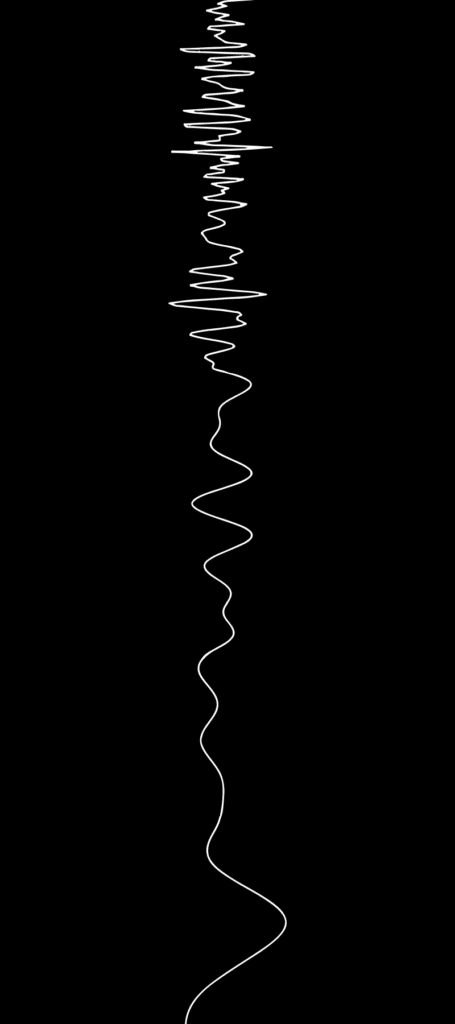

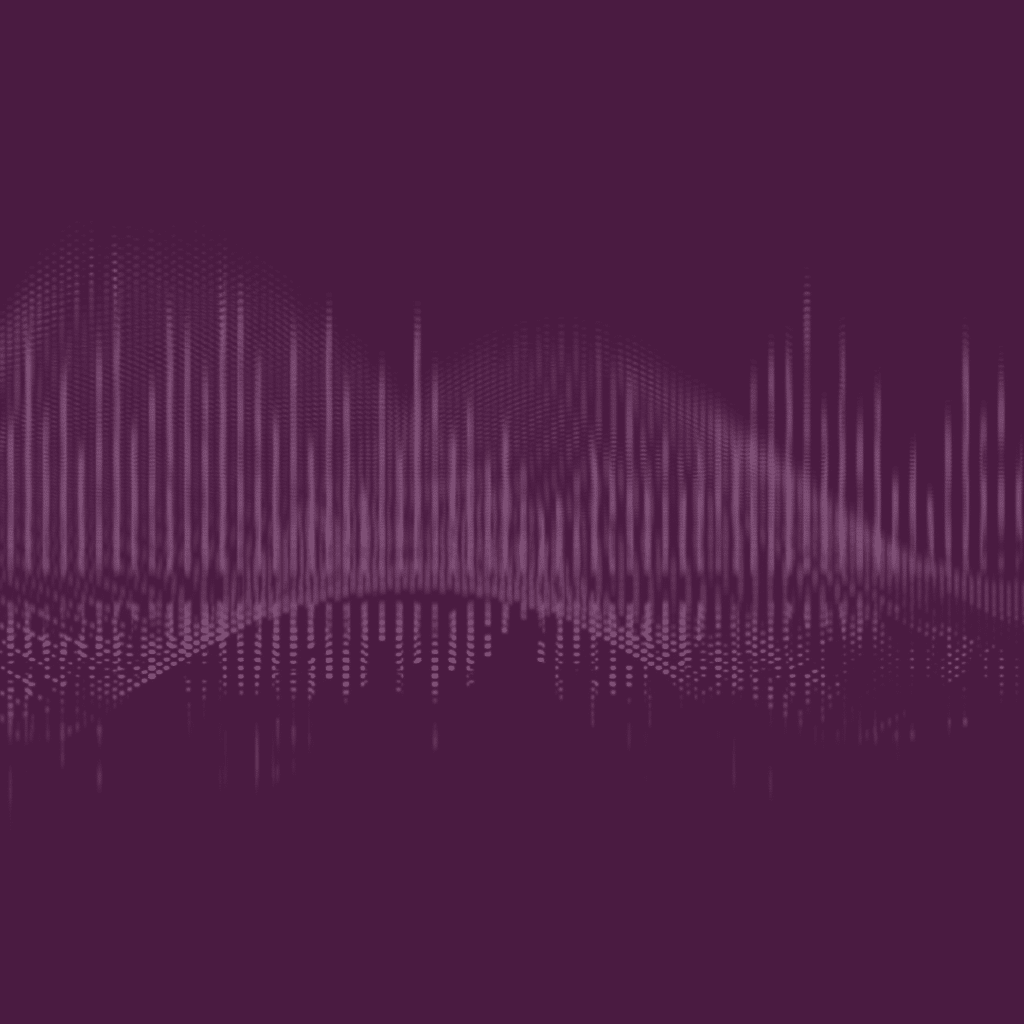

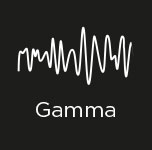
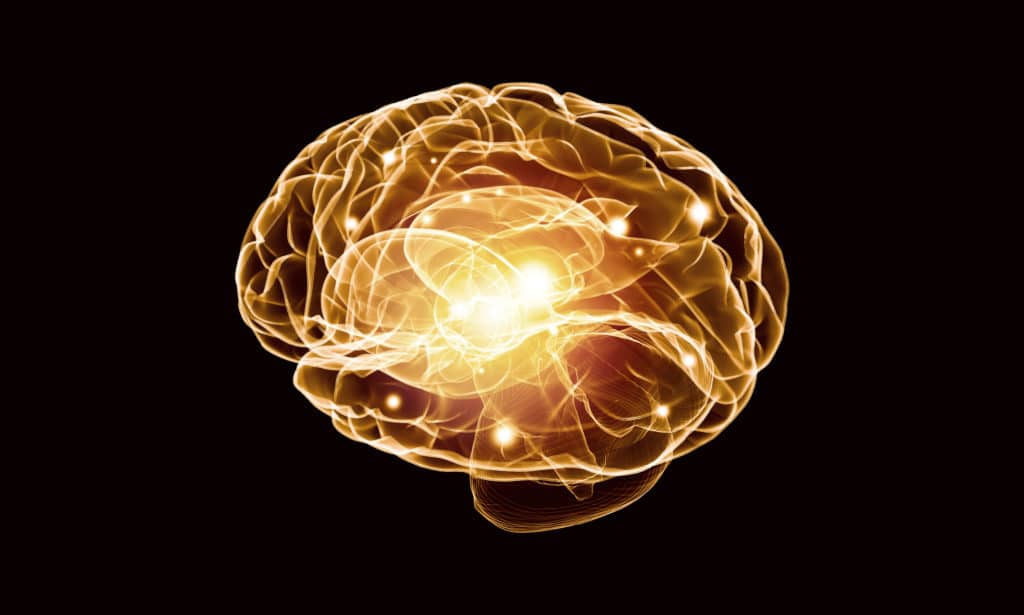
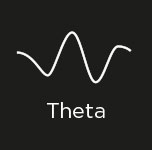
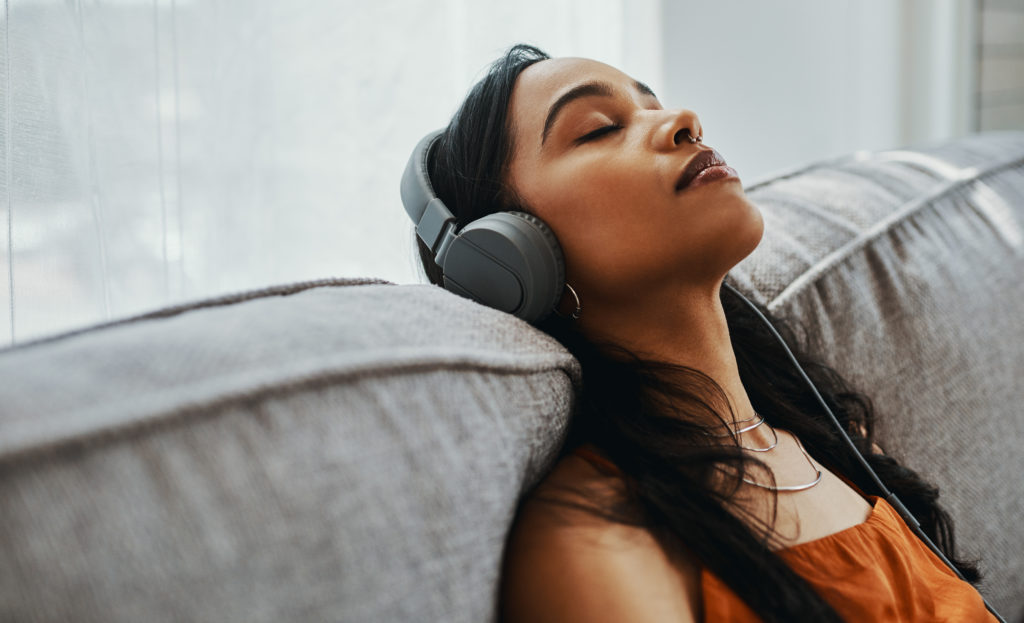
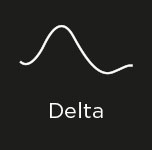
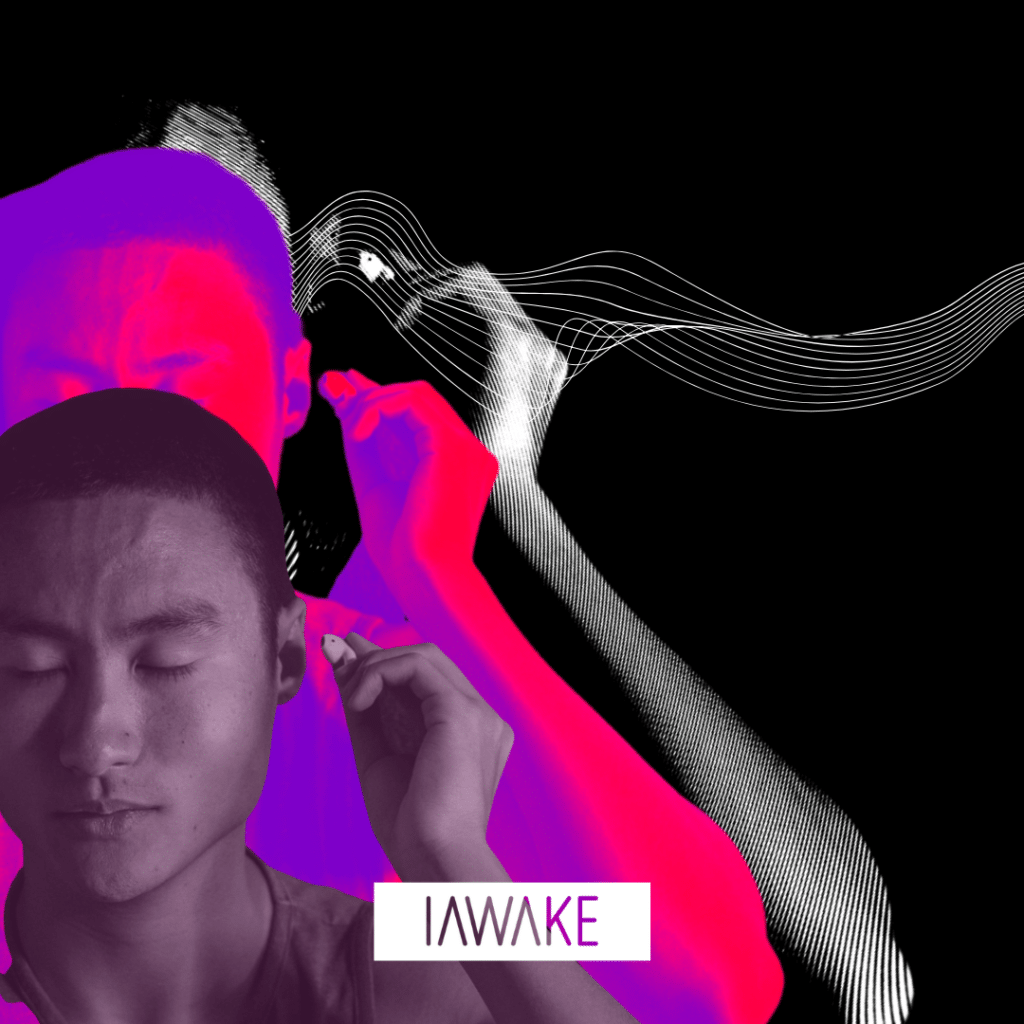
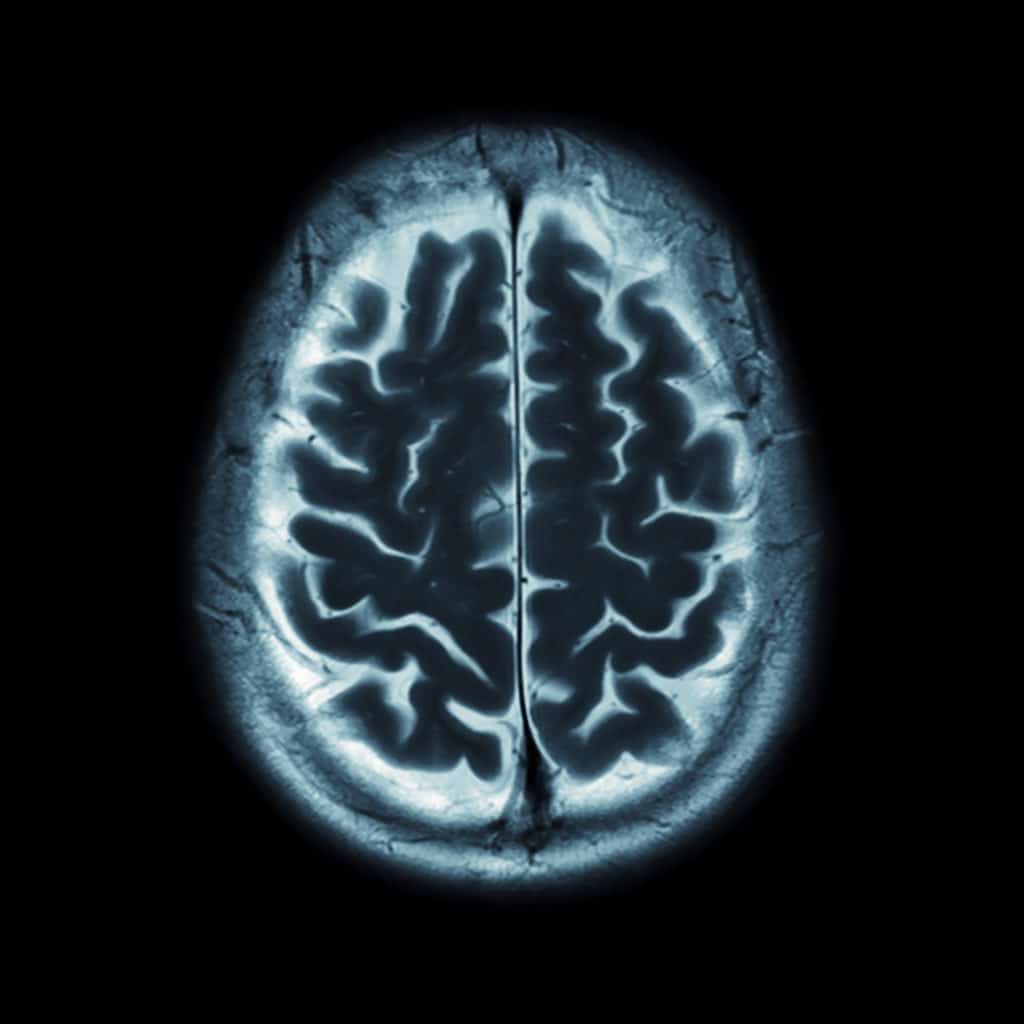
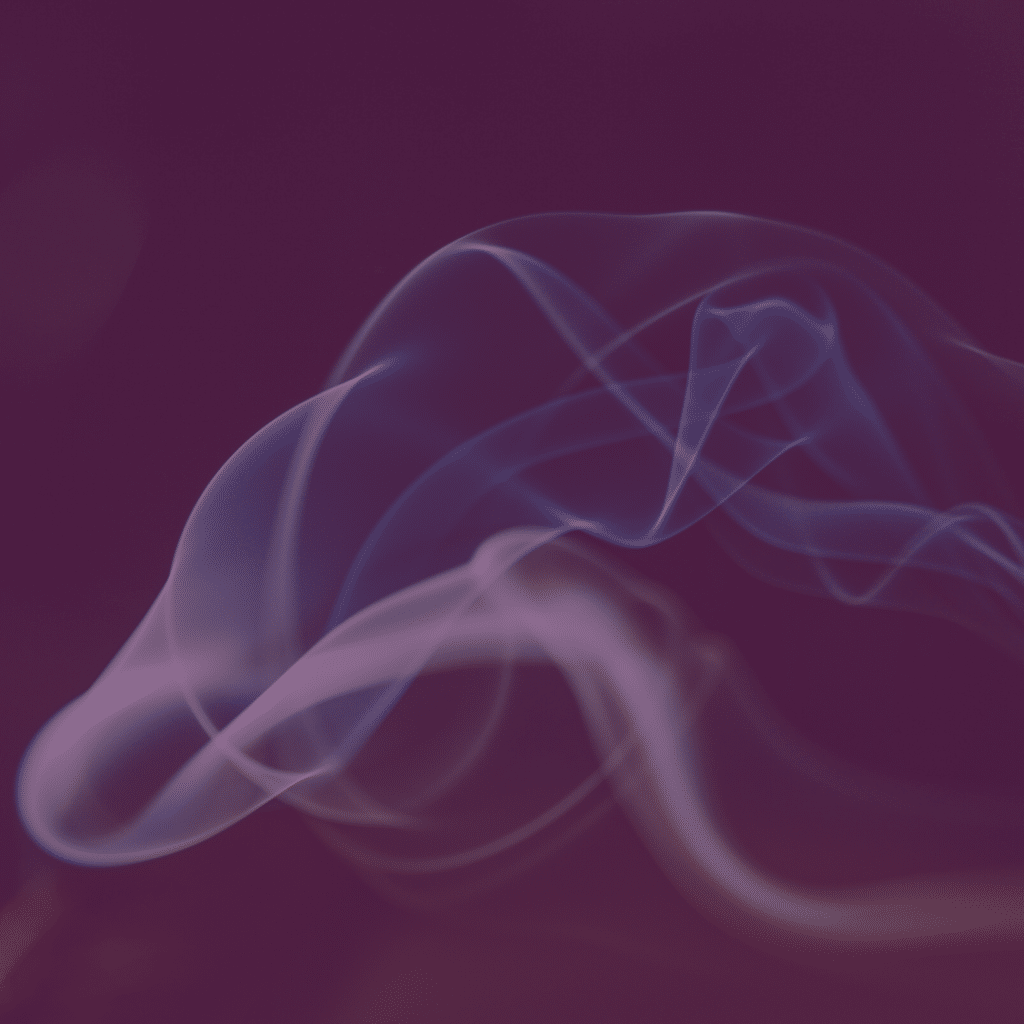
Leave your comments below